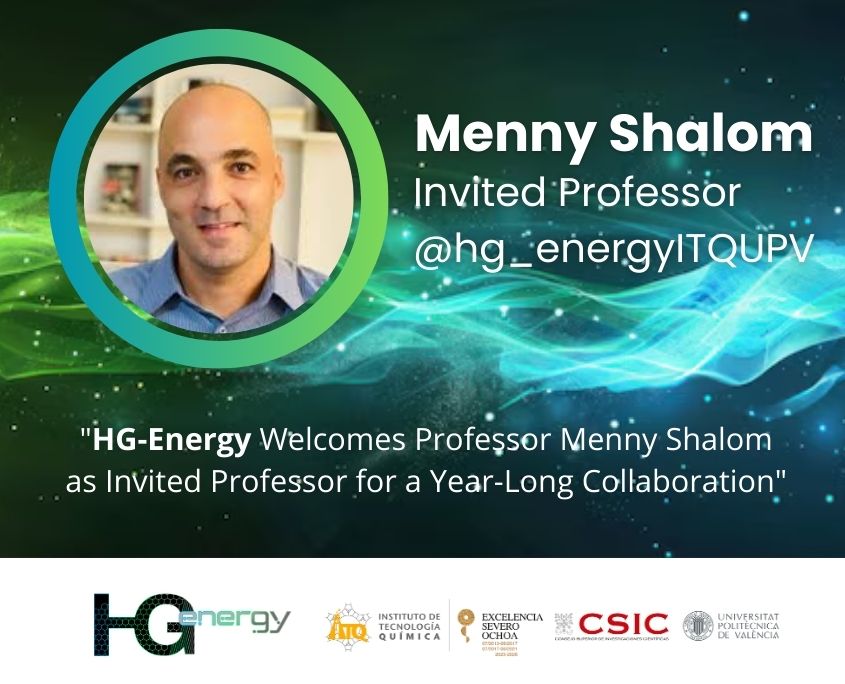We are thrilled to welcome Professor Menny Shalom as an invited professor at HG-Energy for the next year. His arrival marks a significant step in our international collaboration, and we are confident that together we will achieve substantial advances in the field of energy conversion. ⚡🌍
Professor Shalom, currently a Full Professor at Ben-Gurion University of the Negev, Israel, has an outstanding track record in researching materials for energy conversion applications. His group focuses on synthesizing new materials for photoelectrochemical cells and electrocatalysts. 🔬⚗️
We are fortunate to have his expertise, and we are confident that this year-long collaboration will lead to remarkable achievements in our pursuit of sustainable technologies for clean fuel production. 🚀🔋 Welcome, Menny! 👏
#EnergyConversion #SustainableTech #HGEnergy #CleanEnergy #MaterialsScience #EnergyResearch #GreenInnovation #NewMaterials #Photoelectrochemistry #Electrocatalysts #ResearchCollaboration
Short biography Menny Shalom: Menny received his BSc in Chemistry in 2007 from Bar-Ilan University. Afterward, he pursued MSc and Ph.D. degrees under Prof. Arie Zaban at Bar-Ilan University, researching quantum dotsensitized solar cells. He then joined Prof. Markus Antonietti at the Max Planck Institute of Colloids and Interfaces (MPI), Germany, as a Minerva fellowship fellow for his postdoc. From 2013 to 2016, he was appointed a group leader in MPI. At the end of 2016, he was appointed as an Associate Professor at the Ben‐Gurion University of the Negev, Israel. Since 2019, he has been a Full Professor. His group focuses on synthesizing new materials for energy conversion applications, mainly photoelectrochemical cells and electrocatalysts. Menny’s group has published more than 80 papers in well-known journals.
Menny’s research focuses on essential and fundamental scientific topics, ranging from new synthetic methodologies for 2D metal-free materials, sustainable solar-to-fuel conversion, and the development of new materials and concepts for clean fuel production (e.g., hydrogen) by using photoelectrochemical cells (PEC) and electrocatalysts. The emphasis of the group’s research is on understanding the structure-property relationships of novel materials. Namely, the rational design of synthetic processes, investigation of reaction mechanisms, and studying the resulting properties of metal-free materials, which contain only carbon, nitrogen, phosphorus, sulfur, and boron—CNXs (X = P, S, or B)—for photocatalytic and photoelectrochemical reactions on the one hand, and ceramics based on transition metals as electrocatalysts or co-catalysts in PECs on the other hand.




